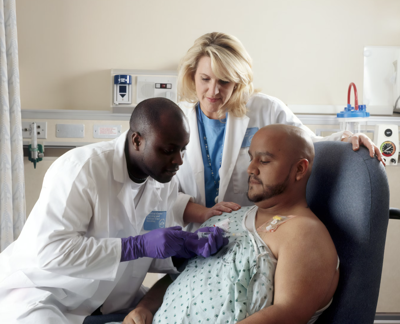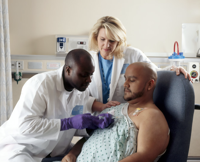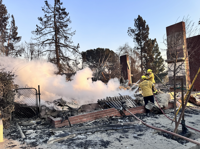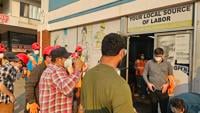
More than 80,000 Californians currently receive dialysis. Photo by National Cancer Institute
Amid the Los Angeles County fires, one comprehensive kidney care provider has activated its emergency response plan, opening its facilities to anyone in need of dialysis treatment at their centers in Pasadena.
"During this rapidly evolving situation, our top priority is patient and teammate safety," said David Brown, group vice president at DaVita said. "We're working diligently to maintain center operations and, in the event of a temporary closure, we're continually assessing and evaluating the area for additional centers with capacity to treat patients. We're grateful to the first responders and their tireless efforts to aid and protect our communities."
Healthcare systems and facilities have also been affected by the fires, disproportionately affecting many Latinos whose first care providers are displaced. UCLA Health's Family Medicine clinic in Pacific Palisades was destroyed in the fire, as well as AltaMed Health Services' Pasadena medical center, which was destroyed by the Eaton fire.
More than 80,000 Californians, many of whom may have diabetes, high blood pressure, lupus or other kidney injuries, currently receive dialysis, a life-sustaining treatment for patients with end-stage kidney disease.
There are two types of dialysis: hemodialysis and peritoneal dialysis, both of which help perform normal kidney functions, filtering waste and excess fluid from the blood.
For many patients, this mandatory treatment must be done daily to be able to stay alive.
“We are heartbroken to share that our medical center located at 2661 E. Washington Blvd. in Pasadena has been destroyed by the #EatonFire,” the facility posted on X, formerly known as Twitter. “Thankfully, everyone was safely evacuated.”
Anyone in need of dialysis treatment, regardless of where they normally get treated, can receive care at any of the two DaVita centers. DaVita serves more than 600,00 patients, the majority of whom are Latinos.
DaVita’s emergency response plan, which emerged as the devastating wildfires spread across the different corners of Los Angeles County, also includes transferring patients that might have closed down due to the fires to centers that can safely provide dialysis treatment, providing patients with relevant medical information, including prescription, dietary instructions and fluid restrictions, should they need to dialyze at a different center, as well installing air scrubbers in centers located in the affected areas.
Matthew Clyburn spokesperson for Davita told CALÓ News that the organization’s centers welcome anyone in need of dialysis treatment at any of their centers that remain open. Clyburn advised the public to call DaVita so that personnel can help locate an open center that is closest to them, for their best convenience.
DaVita also urges people with kidney disease to be prepared when it comes to an emergency evacuation or warning. They recommend kidney patients on dialysis to add the following items to their emergency kit bag:
Emergency phone numbers for doctors and dialysis centers, including alternate nearby centers.
At least three days’ worth of any medicines needed, as well as a list of medicines and the dosage amounts.
For patients with diabetes, a week’s worth of supplies (syringes, insulin, alcohol wipes, glucose monitoring strips).
At least three days’ worth of emergency food.
If you need dialysis care, call DaVita at 1-800-400-8331 for help locating an open center.










(0) comments
Welcome to the discussion.
Log In
Keep it Clean. Please avoid obscene, vulgar, lewd, racist or sexually-oriented language.
PLEASE TURN OFF YOUR CAPS LOCK.
Don't Threaten. Threats of harming another person will not be tolerated.
Be Truthful. Don't knowingly lie about anyone or anything.
Be Nice. No racism, sexism or any sort of -ism that is degrading to another person.
Be Proactive. Use the 'Report' link on each comment to let us know of abusive posts.
Share with Us. We'd love to hear eyewitness accounts, the history behind an article.